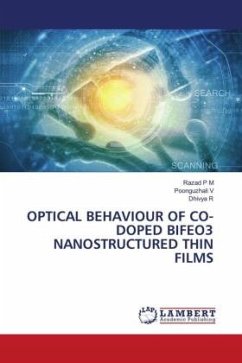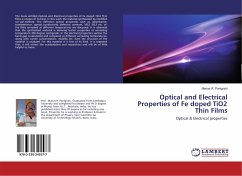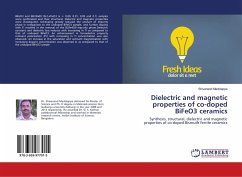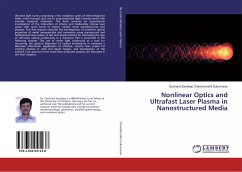BiFeO3 is recognized as promising candidate because of its potential applications in the design of devices combining magnetic, electronic, and optical functionalities. Connection to this pure and Ni & Ti doped BFO thin films were successfully deposited on FTO substrate using hot wall assisted spray pyrolysis system. The structural, morphological and optical properties of thin films were discussed well. The films structure were confirmed with XRD diffraction pattern, and it observed that the samples are polycrystalline in nature and the observed diffraction peaks are indexed to rhombohedral structure with R3c space group. Also codoping BFO with Ni & Ti leads to merging of double split peaks into single head peak. The FESEM images show nanorods formation for pure and codoped BFO samples with an average size of 97 and 90 nm, respectively. Optical properties indicated that considerable amount of visible light absorption for pure and codoped BFO samples. With direct band gaps of 2.54 and 2.55 eV, this material can respond well to photons to generate a steady-state photocurrent under the effect of an internal electric field.
Bitte wählen Sie Ihr Anliegen aus.
Rechnungen
Retourenschein anfordern
Bestellstatus
Storno








